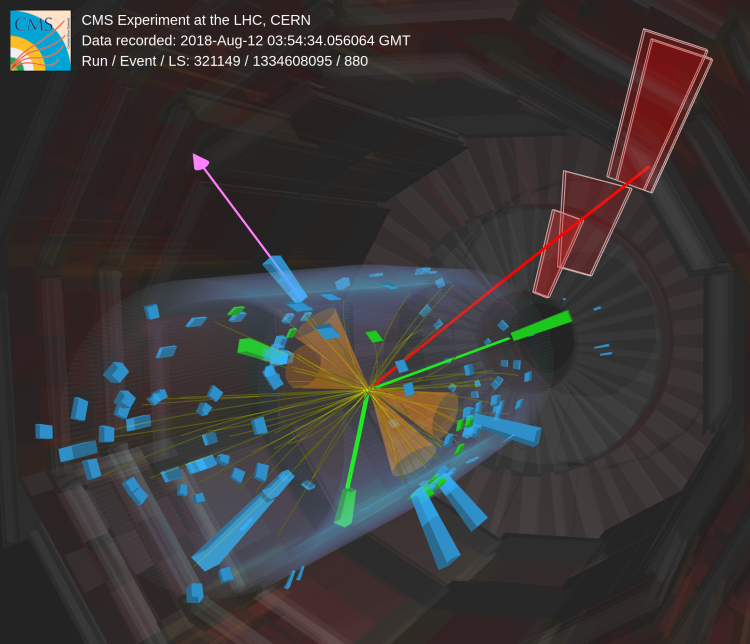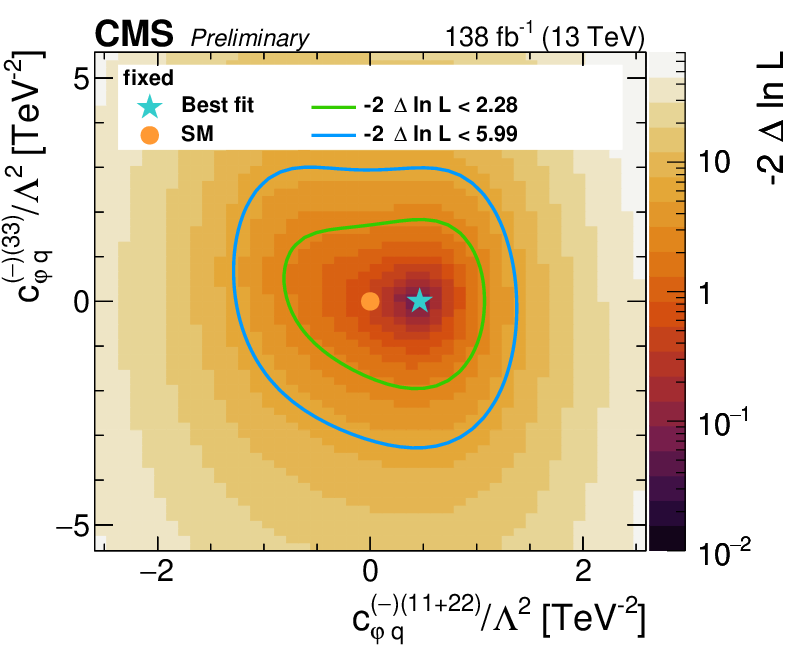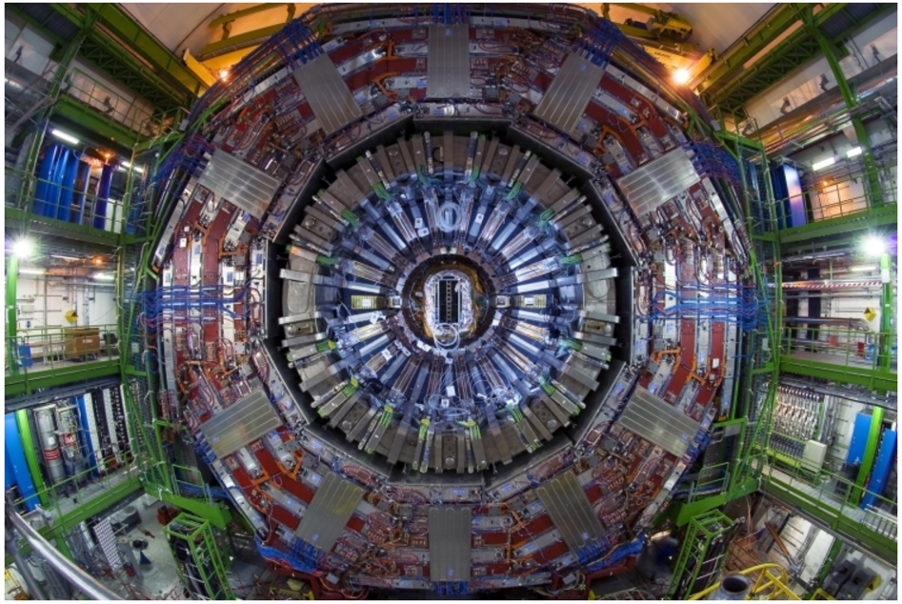
The CMS Collaboration investigates whether physics plays favorites with quarks.
In the standard model of particle physics (SM), quarks come in six different types (“flavours”) which are categorized into three generations. Although the standard model predicts the interactions to be universal among the generations, various experiments have observed hints of a violation of this universality principle—potential signs of new physics. We can test this behaviour at the LHC by measuring the coupling of quarks of different flavours to the electroweak W and Z bosons.
Since we can detect third generation quarks more efficiently, this measurement targets potential differences in the couplings between W/Z bosons and third generation quarks versus their couplings to the lighter first and second generation quarks. We focus on three processes: the production of a W and a Z boson (WZ), the production of two Z bosons (ZZ), and the associated production of a top quark pair and a Z boson (ttZ), as sketched in Figure 1. The W and Z bosons are primarily produced from light quarks in WZ and ZZ production, but they can also couple to third generation top quarks in ttZ production. A simultaneous measurement allows us to understand and disentangle the couplings in a flavour-aware way. This strategy enables us to predict the coupling modifications in multiple processes simultaneously.

Figure 1: Feynman diagrams illustrate WZ or ZZ production (left), ttZ production where the Z is radiated from an initial state quark (centre), and ttZ production with a tZ coupling (right). The vertices marked red indicate couplings that could be modified by new physics.
We select the three processes in decay modes where the leptons originate directly from the Z or W bosons, or from a W boson produced in the top-quark decay. This choice leads to a relatively pure sample of the selected processes but comes with the drawback of a considerable fraction of leptons that do not directly originate from the decay of the top quarks or W and Z bosons that we target. We call these leptons “non-prompt” leptons. Given the high number of leptons required, and the rareness of the signal processes, a substantial fraction of selected events contains non-prompt leptons despite the high separation power of our lepton identification algorithms. The behaviour of non-prompt leptons is hard to model in simulation, and so we evaluate this background process directly in the data using a dedicated event selection.
We measure the momentum distribution of the reconstructed Z boson simultaneously in ZZ, WZ, and ttZ, and interpret the results by estimating potential effects from new physics using a so-called effective field theory. The mathematical description of the standard model is expanded to higher orders in terms of the energy scale considering all possible newly introduced interactions that respect the fundamental symmetries. Although effective field theories do not include a full physics model, they encode slight deviations from the SM caused by new physics at energy scales that are out of reach for direct detection at the LHC. The coupling strengths of the potential new interactions are measured in terms of “Wilson coefficients”, which are constructed such that they are zero in the absence of new physics.
In this measurement, no significant deviations from the standard model expectation are observed. However, we can use the data to constrain the effect of new physics through limits in the size of Wilson coefficients. Two of the extracted Wilson coefficients are shown in Figure 2. This particular coefficient steers the coupling strength of quarks to the Z boson, and the value for the first and second quark generations (x axis) is displayed against the corresponding coupling of the third generation (y axis). Although we measure a slight difference from the prediction in the light-generation coupling, it is compatible within uncertainties indicated by the coloured lines. A total of 10 coefficients are tested in the analysis and we find compatibility with the SM prediction in all cases.

Figure 2: Fit of the couplings of the first and second (x axis) quark generation versus the third (y axis) quark generation coupling. The best fit value to the data is indicated as a star marker and the Standard Model prediction is shown as a circular marker. The lines indicate two levels of uncertainty and show compatibility with the Standard Model. For this scan, all other Wilson coefficients are set to zero.
With this measurement, we constrain Wilson coefficients in a flavour-aware way and shine light on potential new physics that could couple differently to different quark generations. Furthermore, this analysis provides a step towards a more global interpretation of measurements, where we not consider only isolated effects but carefully study their correlations.
Written by: Dennis Schwarz, for the CMS Collaboration
Edited by: Andrés G. Delannoy
Read more about these results:
-
CMS Physics Analysis Summary (TOP-23-009): "Coming soon!"
-
Display of collision events: CERN CDS
-
@CMSExperiment on social media: Bluesky - Facebook - Twitter - Instagram - LinkedIn - TikTok - YouTube

